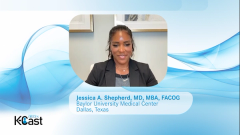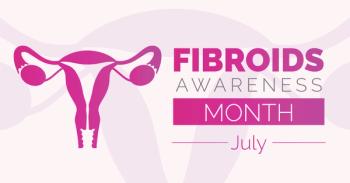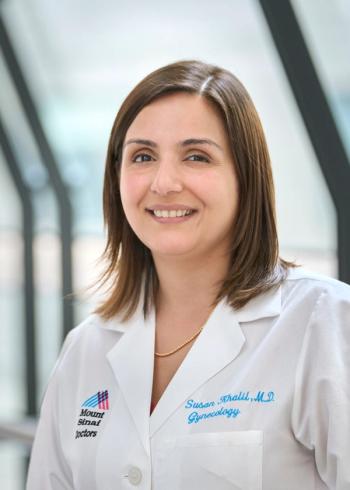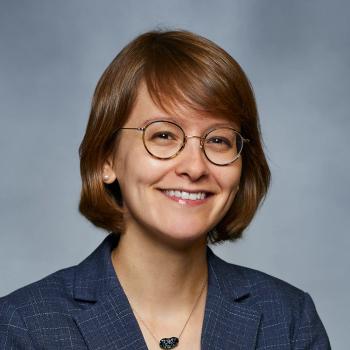
Overview of Uterine Fibroids
Mauricio Abrão, MD, provides an overview of the diagnosis, risk factors, and clinical burden of uterine fibroids.
Episodes in this series

Jessica A. Shepherd, MD, MBA, FACOG: Welcome to this Contemporary OB/GYN® KCast titled “Advances in the Management of Uterine Fibroids.” Hello, everybody. My name is Dr Jessica Shepherd, and I’m a gynecologic surgeon in Dallas, Texas, affiliated with Baylor University Medical Center. I’m also the chief medical officer for Verywell Health and the founder of Sanctum Med and Wellness. I’m joined by the esteemed Dr Mauricio Abrão. He’s an associate professor and the director of the endometriosis division at the University of São Paulo Medical School in Brazil, as well as the president of AAGL [American Association of Gynecologic Laparoscopists]. Welcome, Dr Abrão.
Mauricio Abrão, MD: Thank you, Jessica. Hello, everybody.
Jessica A. Shepherd, MD, MBA, FACOG: We’re going to have a wonderful conversation that will focus on the various factors that shape treatment approaches to uterine fibroids. We’re going to look at gaps in care and review available treatment options, with a focus on current and emerging GNRH antagonists. With that, let’s begin our discussion.
We see this as gynecologists and ob-gyns in our offices every day. These are the patients who we really want to impact. There’s a lot that goes into the diagnosis and burden of uterine fibroids. That starts when patients come into the office and seeing them for the first time or even having them as a repeat patient. We want to know their physical and medical history, which can contribute to the diagnosis and burden of fibroids. Mauricio, how do you differentiate bleeding and pain resulting from uterine fibroids from other uterine disorders?
Mauricio Abrão, MD: Thank you, Jessica. The main things we need to consider are the characteristics of the abnormal bleeding and, eventually, an increase of the abdomen in the patients. These 2 situations may be combined with some characteristics of pain, because sometimes even with submucosal fibroids, we may have more pain than in other situations. It’s not that easy to clinically differentiate situations like this from adenomyosis and other situations. This is a combination of clinical aspects that we need to consider. We also can’t forget infertility.
Jessica A. Shepherd, MD, MBA, FACOG: Infertility is important because no matter how young a patient is or where they are in their fertility journey, it’s a part of the conversation that should be brought up as early as we can in order for us to make the best decisions for women depending on where they are in that journey. As you said, sometimes it’s hard to differentiate types of uterine disorders that may or may not be the result of fibroids.
This is where the relationship with physicians and patients starts. It’s defining a fundamental start to what you’re experiencing, where you’re trying to go in your journey, and how we can help that. It’s important for us to have a starting point of general signs and symptoms of uterine fibroids to inform people who are even younger, in their teens or early 20s, who maybe don’t have an idea of what uterine fibroids can look or feel like. It’s important to start that conversation early so they know that uterine fibroids can have a broad range of signs and symptoms. It’s important that we start that conversation on heavy bleeding earlier. What is heavy bleeding? What constitutes excessive bleeding? Then also risk factors. We discuss risk factors associated with uterine fibroids a lot in our conferences and articles. Mauricio, how do you discuss risk factors and how they can contribute to uterine fibroids with your patients?
Mauricio Abrão, MD: We should consider the age of the patients—between 30 and 50 years old—as well as some hormonal factors, like the time of the first menstruation—the menarche—and the time of menopause. In other words, the range of exposure for hormones for these women. The family history is very relevant. The race of the patient is also important. For example, we need to remember that the prevalence of fibroids is higher for Black women than White women. Obesity is another factor. Other factors, like hypertension, should be considered as well. Patients without kids, nulliparous patients, are another factor as well. These are important factors to consider.
Jessica A. Shepherd, MD, MBA, FACOG: That’s the storybook approach to when our patients come in, because there’s never going to be just 1 thing that’s going to cause them to have 1 particular disease or burden state. It’s the same with uterine fibroids, especially when we think of genetics and race. We know that Black women are much more likely to have fibroids. It can be as high as the 70th or 80th percentile. These women with a family history and an increased risk of fibroids because of race.
That also places another burden on women outside our risk factors. Now that they have uterine fibroids, what does that impact? What effect does it have on their quality of life? Bringing that into the conversation, over the years, I’ve put that more into the forefront of the conversation about the burden for the patient, whether that’s from an economic standpoint or a relationship standpoint that they have with their partners. As you mentioned earlier, there’s the fertility issue. Those are quality-of-life factors that determine what course of action to take with a patient or how they see their disease state in a quality-of-life impact. Do you take that approach as well when you’re talking to your patients about fibroids as far as the quality of life and burden that it may have on their lives?
Mauricio Abrão, MD: This therapeutic decision needs to consider the quality of life of the patient, because sometimes the quality of life is so impacted by the disease that we need to give this information ahead of time when we think about the therapeutic options for these patients. We need to know how to answer patients’ questions, because this may be a chronic situation that they’re not considering properly. They might not be properly seeing the impact of the disease in their lives. This is something that’s part of a good medical-patient relation that brings this information properly for us to decide what to do.
Jessica A. Shepherd, MD, MBA, FACOG: Especially if they have some preceding information that fibroids are a bad thing or are only going to lead to a certain impact as far as a surgical decision. I’ve had many patients come in thinking it’s going to significantly decrease quality of life or only lead to a hysterectomy because of the experience that their mothers or grandmothers had. We have to take the time to change that narrative, especially in this day and age when we have so many treatment options. We’ve come a long way as we think of treatment management plans for patients with uterine fibroids.
Transcript Edited for Clarity
Newsletter
Get the latest clinical updates, case studies, and expert commentary in obstetric and gynecologic care. Sign up now to stay informed.



















